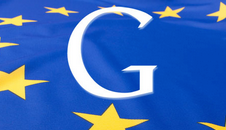Today, Google launched estimated cross-device conversions in AdWords. It’s the company’s first step in providing advertisers with conversion insights that reflect the real-world impact of their campaigns.
The new conversion type is the first to roll-out as part of the new Estimated Total Conversions, which will eventually include phone calls and in-store visits. Estimated cross-device conversions is rolling out globally over the next few weeks.
“Consumers just want information, they don’t care how they get it. Today’s announcement is about measurement and catching up to the consumer behavior in the real world,” said Google’s Sridhar Ramaswamy, SVP, ads and commerce, by phone.
With enhanced campaigns, Google recognized the company “needed to pivot to be omnipresent” in a way that would allow advertisers to reach users on all devices without having to create multiple campaigns to do so effectively, says Ramaswamy. Now the company is focusing on measurement tools to capture any conversion that starts with an AdWords click whenever a transaction is completed on a different device, via phone or in-store.
Google has made several measurement updates in AdWords recently: more flexible conversion windows, cross-account conversion tracking, adding conversion data to the bid simulator and, most significantly for many advertisers, the offline conversion import feature.
How Do Cross-Device Estimates Work?
Google is calculating cross-device conversions by using a sample of data from users who signed into their Google accounts on multiple devices. The population of logged-in users is Google’s proxy for general user activity.
Cross-device conversion data is down to the ad group level. Advertisers will need to have conversion tracking implemented and a “sufficient volume” of conversions in order for the estimating to be statistically reliable. I inquired about what those volume thresholds are and will update here when I receive an answer. Update: Accounts need to record at least 50 conversions each day to have a high chance of seeing estimated cross-device conversions.
For now, cross-device conversions are calculated only for conversion paths that start from a Google.com search. The company says it is still working on how to capture cross-device conversions from ads on the search and display networks.
Is It Reliable?
Ramaswamy says they’ve been testing this measurement with many advertisers across a range of industry verticals and analyzed data across thousands of AdWords advertisers to learn more about cross-device conversion patterns.
The company released numbers showing the lift in total conversions attributed to AdWords campaigns when using estimated total conversions. Entertainment saw the biggest increase at 12 percent; travel and technology both saw an 8 percent lift; retail conversions increased by 7 percent; local saw the smallest increase at 2 percent.
When asked whether he thought advertisers may view cross-device conversion estimates with the same level as skepticism as view-through conversions, Ramaswamy said he doesn’t think so. Unlike view-through conversions, he said, cross-device conversion estimates are based on real conversions and then scaled based on aggregated user data. Nothing is scaled unless there is enough data to meet statistical confidence — thus the minimum volume requirements.
Susan Waldes, Director of Client Services for 3Q Digital, who will be discussing this new feature at SMX East in New York today, says,
Google plans to add other conversion types like phone calls and in-store visits. Local certainly will be affected more broadly when Google rolls out these new conversion types. According to Google, people make more than 40 million calls to businesses each month directly from its ads.
For now, the data is not incorporated into the bidding tools in AdWords, though that’s expected to come. Ramaswamy says conversion optimizer will start incorporating these new conversion types.
Contributing authors are invited to create content for Search Engine Land and are chosen for their expertise and contribution to the search community. Our contributors work under the oversight of the editorial staff and contributions are checked for quality and relevance to our readers. The opinions they express are their own.



